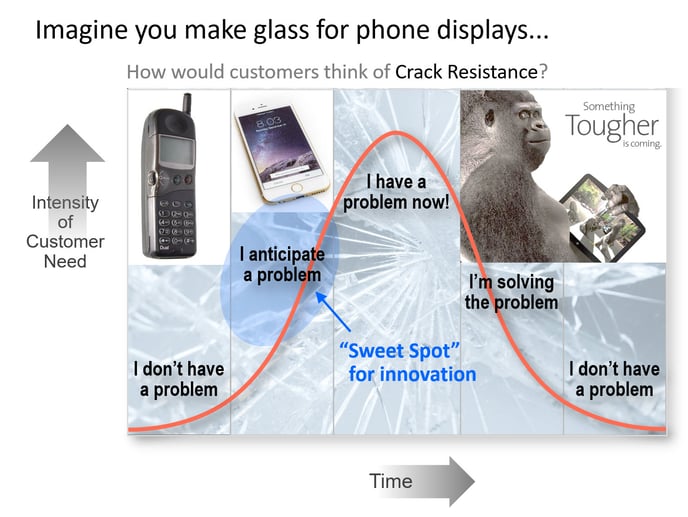Your sales force becomes a learning force when they record their good probing in your CRM for later data-mining.
For many companies, the “promise” of their CRM (customer relationship management) software is still largely unfulfilled. Perhaps you’ve invested in powerful software, such as Salesforce. Are you routinely data mining this huge reservoir of customer visit reports to detect rising market needs, industry trends, and more?
It would be unfair to say the problem is “garbage-in-garbage-out.” But if each sales rep enters information into the database in a different way, it will indeed be difficult to convert all this information into actionable company insights
Make customer "outcomes" the unit of customer insight
If you want to turn your sales force into a learning force, you need to make “outcomes” the unit of customer insight. Why are customer outcomes--their desired end result--so important? When properly explained, especially with an Outcome Statement, this tells your R&D or other solution providers exactly what they need to solve with a new product or service.
Imagine this scenario: Your company makes glass for phone displays. How important would it be for your customers to minimize the frequency of glass cracking in their phone displays?
The importance of crack resistance depends on when you ask, doesn’t it? The first cell phones had glass displays that were tiny, so crack resistance wasn’t an issue. Then glass displays became larger, so phone makers anticipated a problem with glass cracking. As glass began covering the entire phone, cracked glass—with its high warranty costs—became a critical issue.
Then a clever glass supplier—in this case, Corning—developed a much more crack-resistant glass called Gorilla® Glass. As phone producers began using this solution, their intense desire to solve this problem diminished.
 If you were a glass producer, when would you want to recognize this rising need for glass crack resistance? Your “sweet spot” would be when customers anticipate the problem.
If you were a glass producer, when would you want to recognize this rising need for glass crack resistance? Your “sweet spot” would be when customers anticipate the problem.
Capturing outcomes in your CRM
Now imagine your sales team was constantly recording customer outcomes after each call. They could send these detailed summaries to their customers, impressing them with their interest and professionalism.
And by adding these notes to your CRM, your marketing department or product managers could detect rising needs like this through data mining. We call this Market Scouting. It’s an early-warning system that tells your company's solution-providers when to begin working on a new-product development project or design a new service.
Why aren't more companies conducting "Market Scouting"?
To implement Market Scouting well--hearing weak market signals before competitors--three steps must take place:
- Customer needs in customers' brains must enter your salespeople's brains through strong probing.
- The needs must move from your salespeople's brains into your CRM database.
- You must be able to mine your CRM database to gain market foresight.

Step 3 is getting much easier with the advent of AI applied to CRM systems. Our SalesPrepTM system--offered as part of our Everyday VOC® training--is focused on step 1. For many B2B clients, the weak link is step 2: convincing their sales team to consistently record their call reports in the CRM.
This is unfortunate, because a lack of CRM discipline doesn't just impact Market Scouting. It also degrades selling effectiveness. This was one of the findings in our research, VOC Skills that Drive Sales (page 13): We found a strong correlation between CRM data entry and beating sales quotas.
Keywords: data mining, CRM, customer relationship management, market needs, timing, sales professional, learning force, Everyday VOC, SalesPrep
